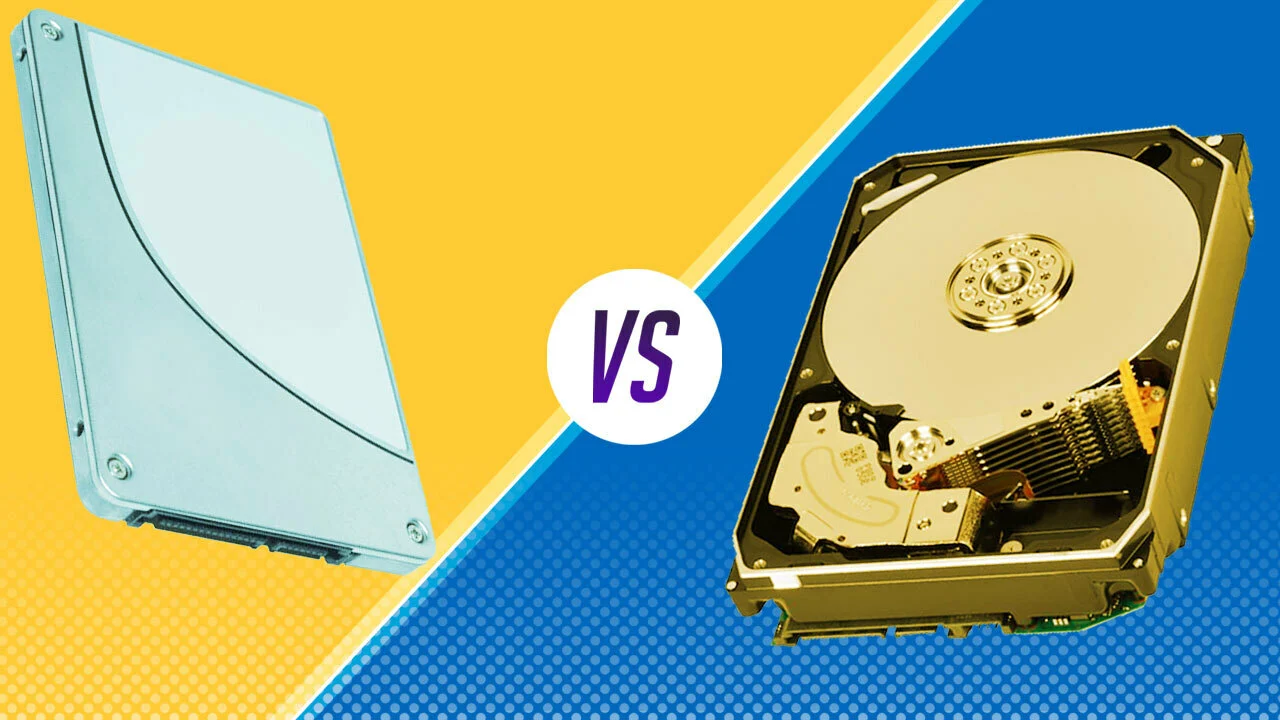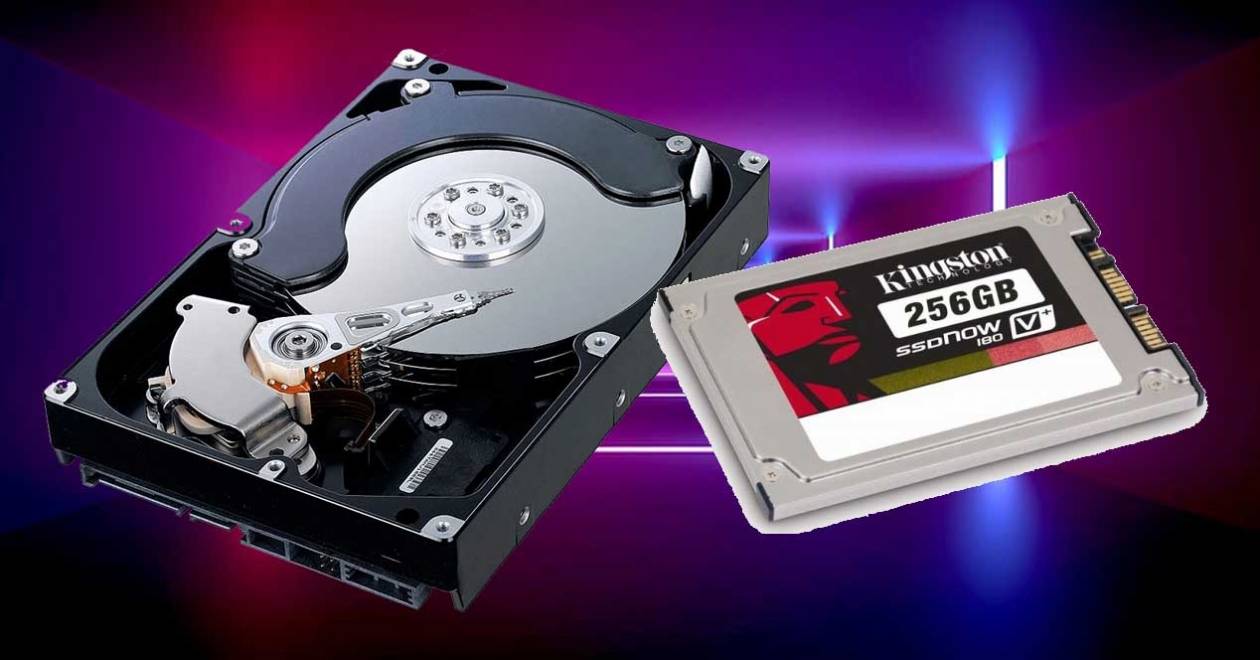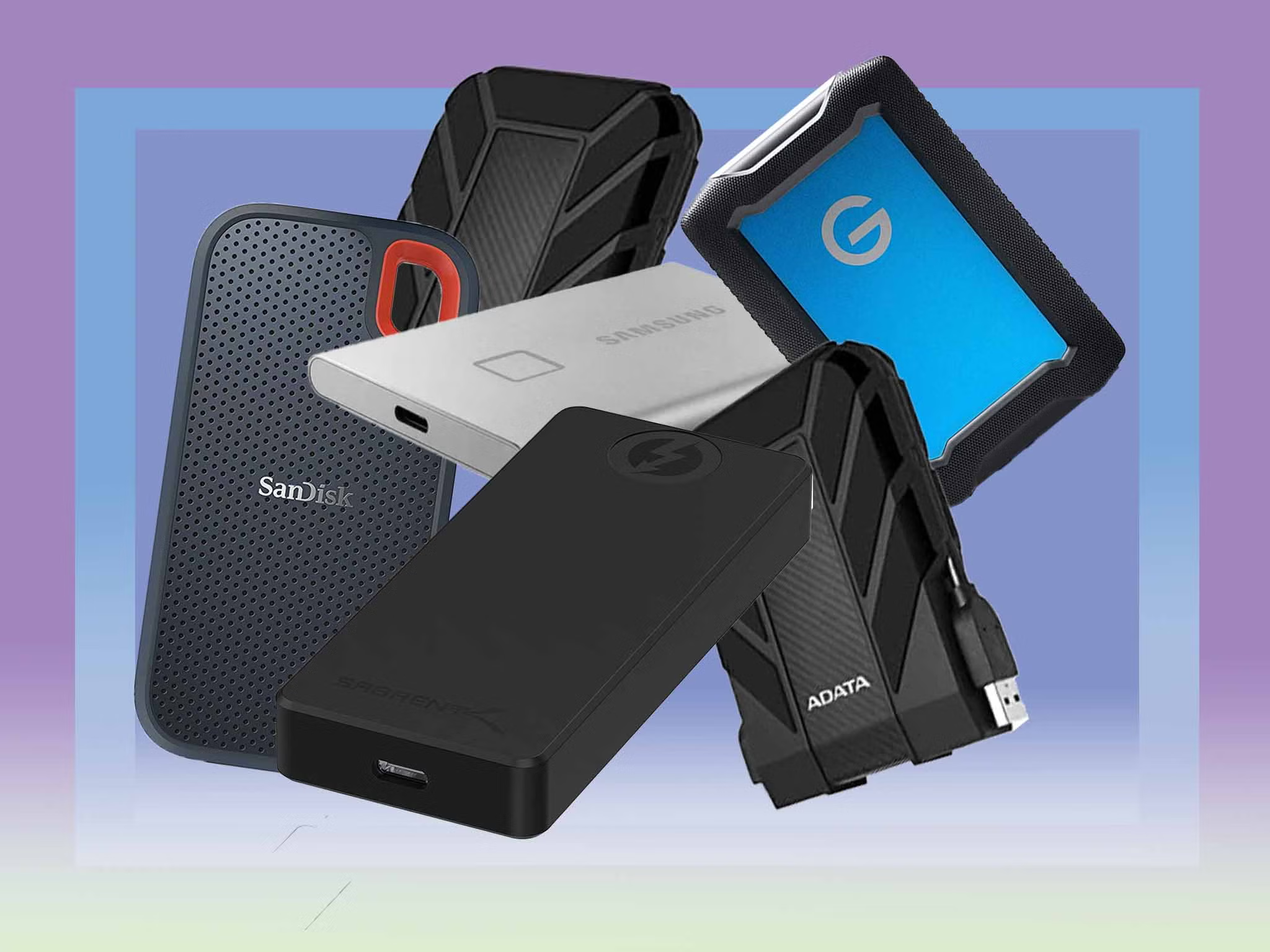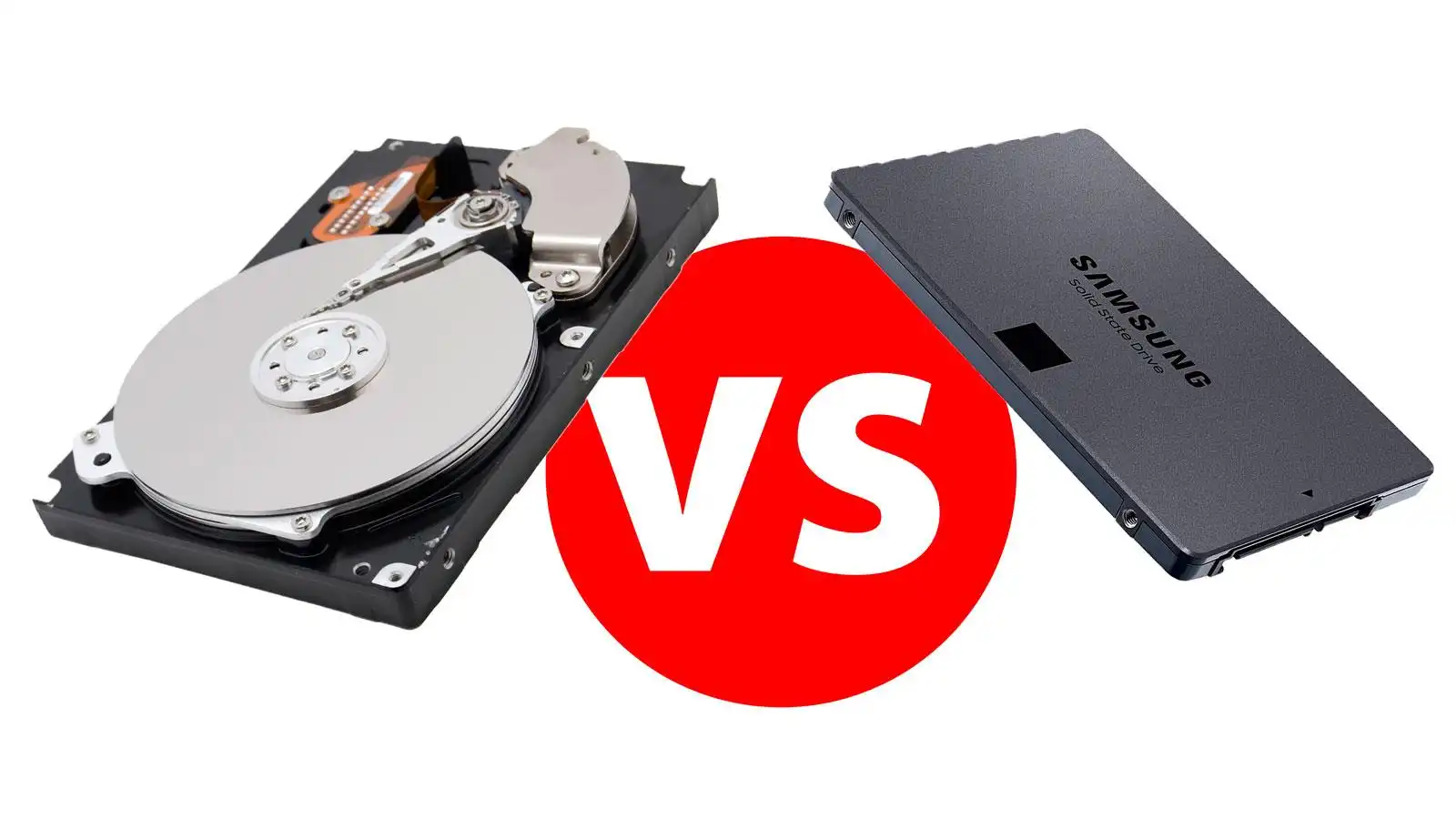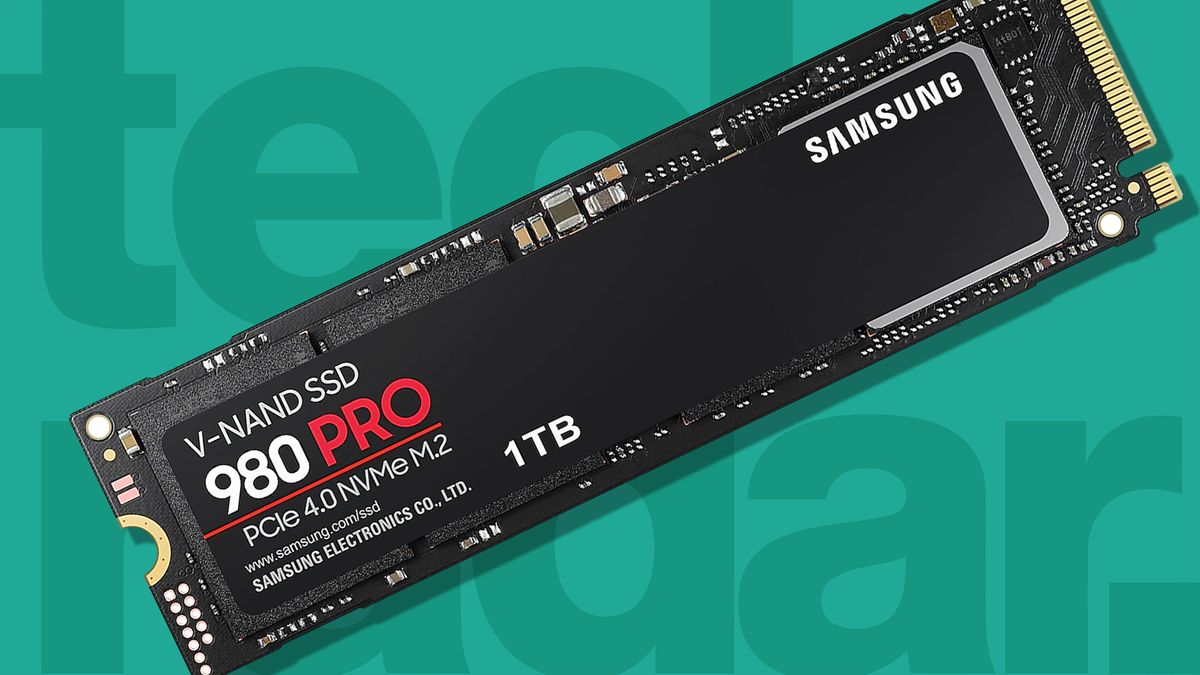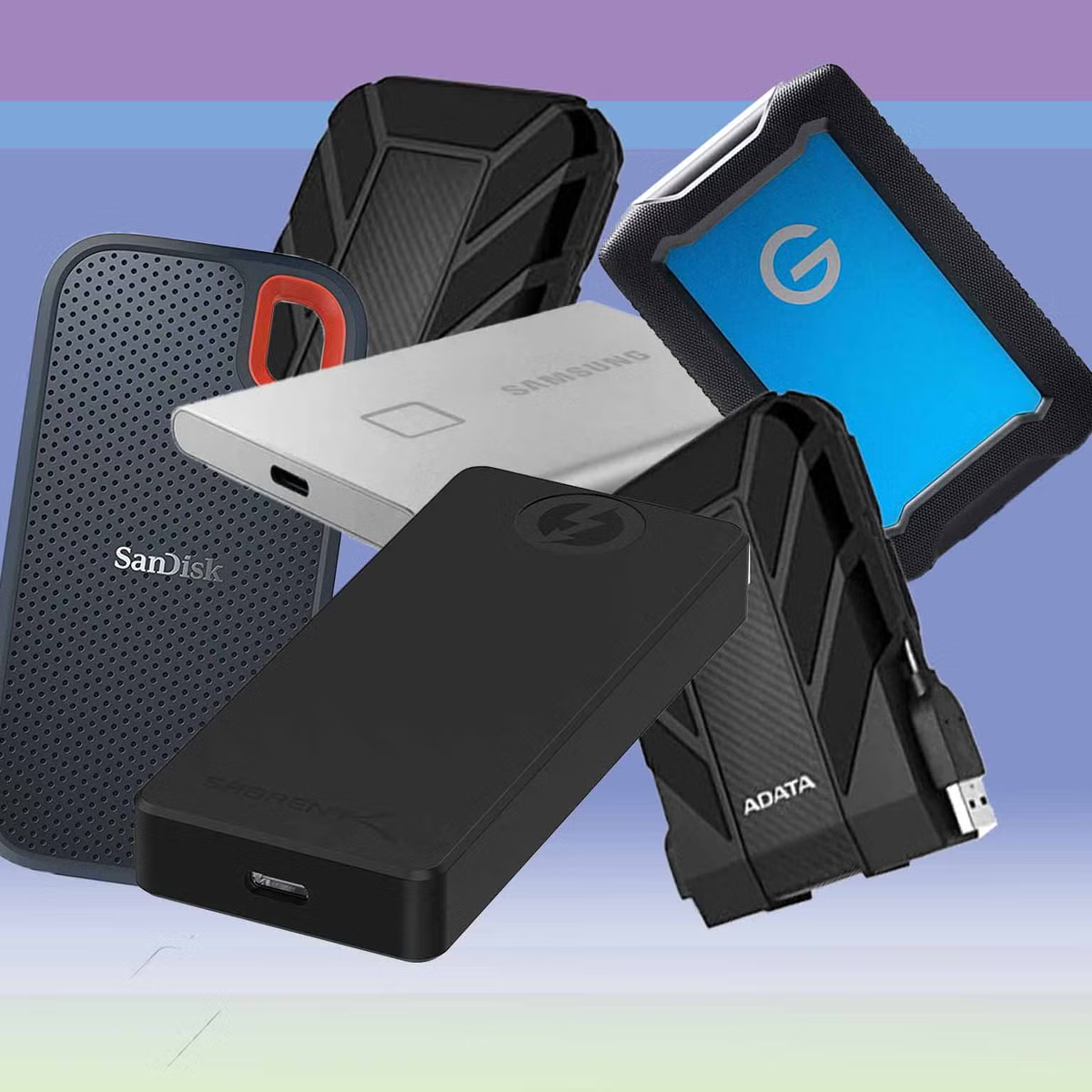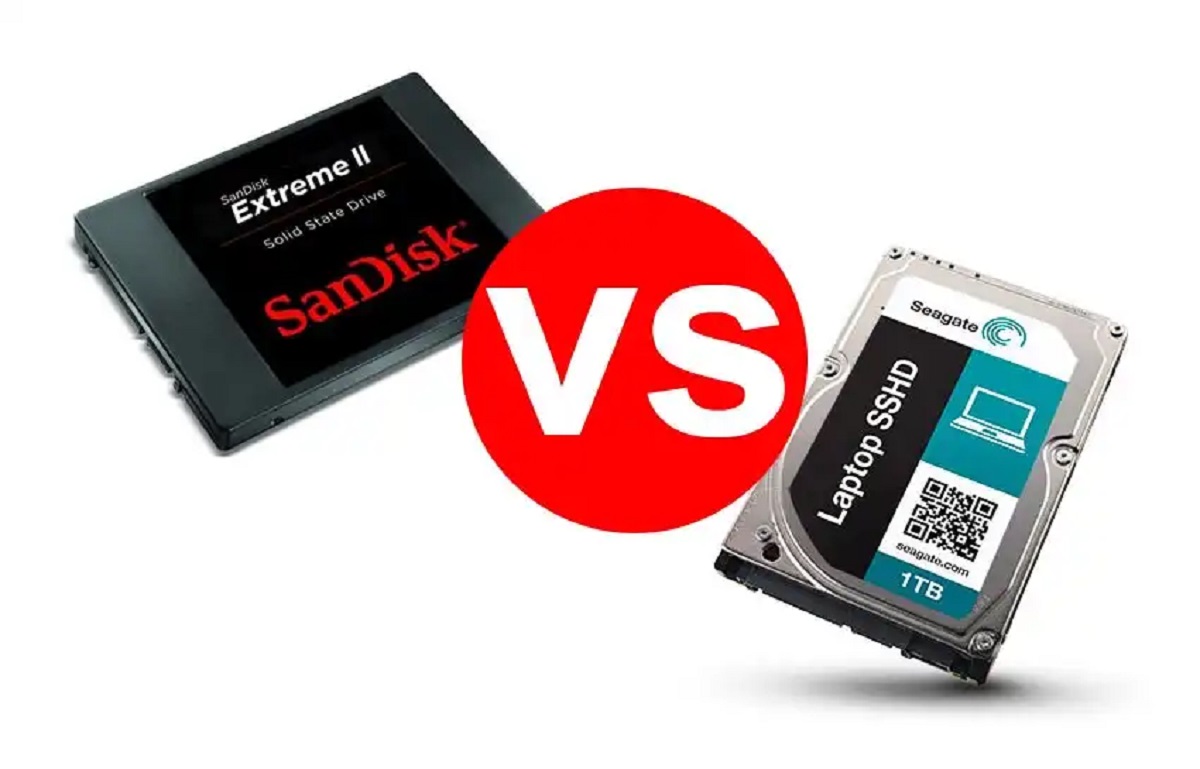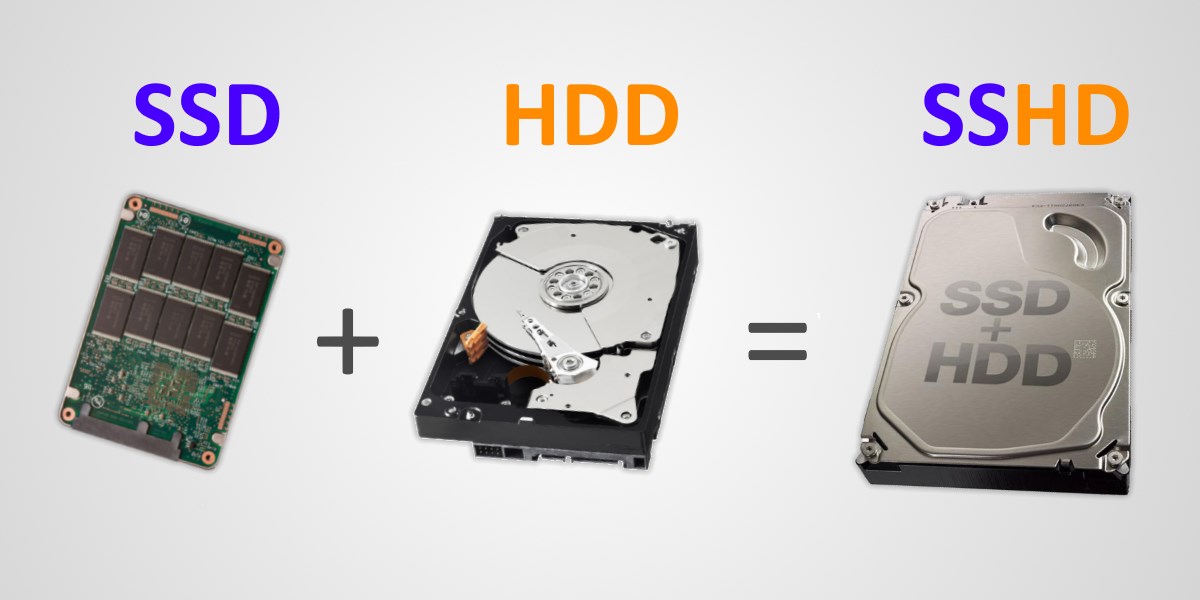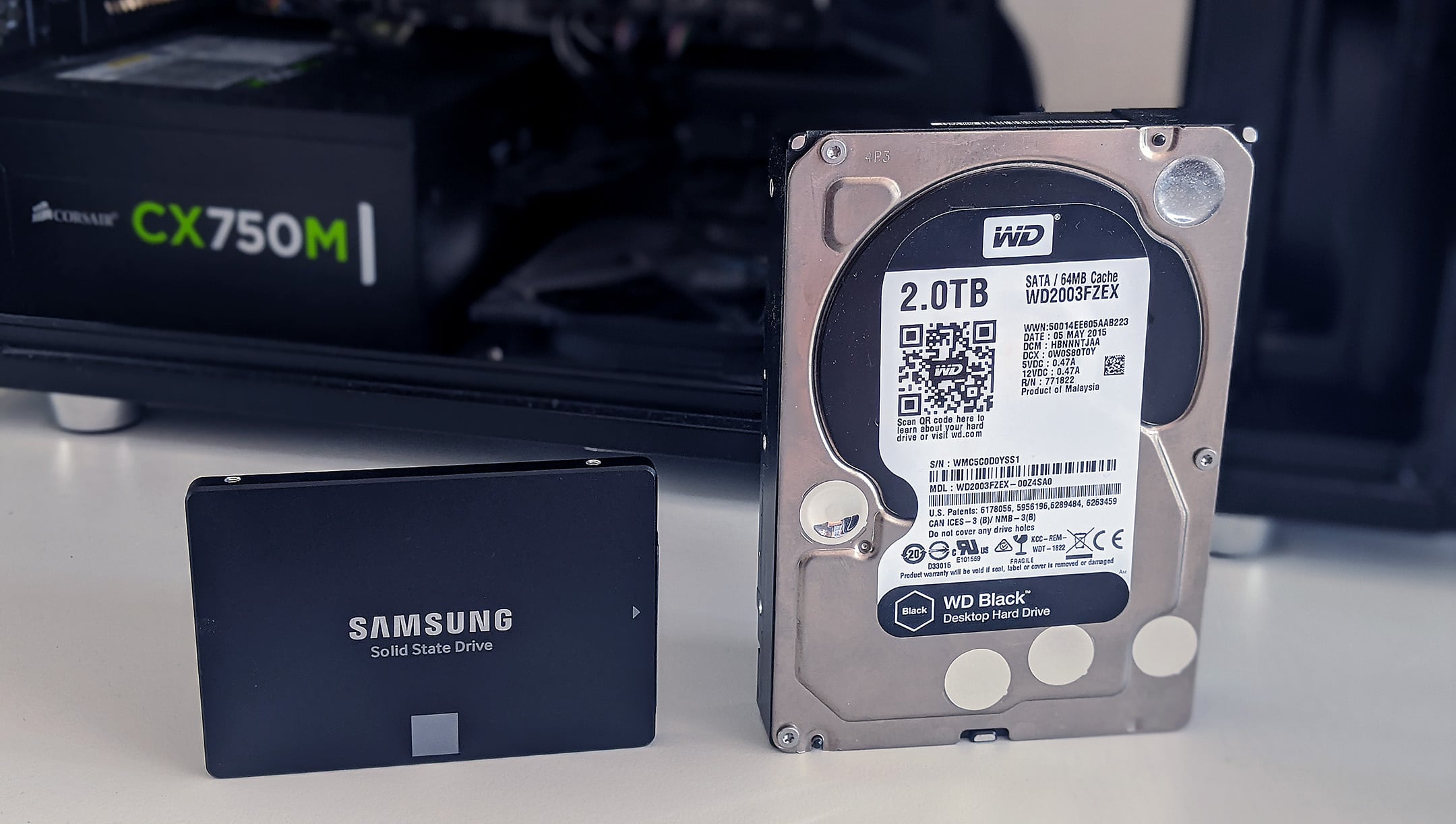Introduction
Welcome to the world of storage devices, where the battle between hard drives (HDD) and solid-state drives (SSD) continues to rage on. In this tech-savvy era, storage is a crucial component for every device, whether it’s a computer, laptop, or even a gaming console. Both HDDs and SSDs serve the same purpose of storing and retrieving data, but they do so in different ways.
At their core, HDDs consist of spinning magnetic disks, while SSDs are composed of interconnected flash memory chips. These fundamental differences give rise to a host of contrasting features and performance capabilities. In this article, we will delve into the details and make a comprehensive comparison between hard drives and SSDs.
By understanding the differences between these two types of storage devices, you will be equipped with the knowledge necessary to make an informed decision when considering an upgrade or purchasing a new device.
Factors such as speed, durability, capacity, power consumption, noise production, and price will be explored to give you a comprehensive view of the pros and cons of each storage option. After weighing all these factors, you will be able to determine which type of storage device best suits your needs and budget.
Without further ado, let’s dive into the world of HDDs and SSDs and explore the various aspects that make them different from each other!
Comparison of Hard Drive and SSD
When it comes to comparing hard drives (HDD) and solid-state drives (SSD), several factors come into play. Let’s delve into the various aspects and see how these two storage options stack up against each other.
- Speed and Performance: One of the most significant advantages of SSDs over HDDs is their speed and performance. SSDs use flash memory for data storage, which allows for faster data access and retrieval. On the other hand, HDDs rely on spinning magnetic disks, which results in slower read and write speeds. If you’re looking for a storage solution that can handle intensive tasks and provide quick boot times, an SSD is the way to go.
- Durability and Reliability: SSDs have no moving parts, making them more resistant to physical shock, vibrations, and general wear and tear. This makes them highly durable and reliable, reducing the risk of data loss due to accidental drops or bumps. HDDs, with their intricate mechanical components, are more susceptible to damage. If you need a storage device that can withstand rough handling or is intended for portable use, SSDs offer greater peace of mind.
- Capacity: When it comes to storage capacity, HDDs are the winners. They offer larger capacities at more affordable prices. You can easily find HDDs with terabytes of storage space, making them ideal for users with extensive data storage needs. SSDs, although catching up, still tend to be more expensive for higher capacities. However, if you prioritize speed and performance over sheer capacity, SSDs are an excellent choice.
- Power Consumption: SSDs are known for their low power consumption. The absence of spinning disks and moving components means that less power is required to operate an SSD. This translates into longer battery life for laptops and decreased energy consumption for desktop systems. On the other hand, HDDs consume more power due to their mechanical nature. If you’re aiming for energy efficiency, SSDs have the upper hand.
- Noise and Heat Production: HDDs tend to produce more noise and heat compared to their SSD counterparts. The spinning disks and moving read/write heads create mechanical sounds, which can be noticeable in quiet environments. Additionally, HDDs generate more heat during operation. In contrast, SSDs are completely silent and generate minimal heat, contributing to a quieter and cooler computing experience.
- Price and Affordability: HDDs have a clear advantage when it comes to price per gigabyte. They offer larger capacities at a lower cost compared to SSDs. If you require a significant amount of storage space at an affordable price, HDDs are a more budget-friendly option. However, with falling SSD prices and advancements in technology, SSDs are becoming increasingly affordable and are worth considering if performance is a priority.
- Compatibility: HDDs have been the standard storage option for decades, leading to widespread compatibility. They can be easily connected to various devices, including older systems and gaming consoles. SSDs, while also compatible with most devices, might require additional adapters or connectors for older systems that do not have native SSD support. It’s essential to consider your device’s compatibility requirements when choosing between an HDD and SSD.
By examining these factors, you can determine the storage option that aligns best with your specific needs and preferences. Whether you prioritize speed, durability, capacity, power consumption, noise production, or price, both HDDs and SSDs offer unique advantages that cater to different user requirements.
Speed and Performance
When it comes to speed and performance, solid-state drives (SSD) take the lead over hard drives (HDD). SSDs utilize flash memory technology to store data, which allows for incredibly fast data access and retrieval times. The absence of moving parts in an SSD means that there are no mechanical limitations that can slow down data transfer rates.
On the other hand, HDDs rely on spinning magnetic disks and mechanical read/write heads to access data. This mechanical process results in slower read and write speeds compared to SSDs. The time it takes for the read/write heads to physically move to the correct location on the spinning disk can lead to longer data access times.
SSDs not only excel in overall speed but also offer significantly faster random access times compared to HDDs. Random access refers to the ability to access data from any location on the storage device instantly. With an SSD, applications launch quicker, files transfer faster, and the overall system responsiveness is greatly improved.
The speed advantages of SSDs are particularly noticeable in activities such as booting up the operating system, opening large files or applications, and loading games. With an SSD, you can expect lightning-fast boot times, reducing the time you spend waiting for your system to start up.
In contrast, HDDs, due to their mechanical nature, have inherent limitations when it comes to speed and performance. The spinning disks and moving read/write heads introduce physical constraints that can slow down the data retrieval process. As a result, accessing large files or launching resource-intensive applications might take longer with an HDD.
If you’re a gamer or work with large multimedia files on a regular basis, the improved speed and performance of an SSD can have a significant impact on your overall user experience. Games load faster, levels and scenes render quickly, and complex multimedia projects can be handled with ease.
However, it is worth noting that SSDs with higher storage capacities tend to perform better than their lower capacity counterparts. As the capacity of an SSD fills up, its performance may begin to degrade compared to when it is relatively empty. This is due to the way SSDs manage and handle data.
In summary, if you prioritize speed and performance in your storage device, SSDs are the clear winner. Their use of flash memory and lack of mechanical components allow for lightning-fast data access and retrieval times, providing a noticeable improvement in overall system speed and responsiveness.
Durability and Reliability
When it comes to durability and reliability, solid-state drives (SSD) have a distinct advantage over hard drives (HDD). The reason for this lies in the fundamental differences between their respective technologies.
SSDs are constructed using NAND flash memory, which means they have no moving parts. This absence of mechanical components makes SSDs more resistant to physical shocks, vibrations, and general wear and tear. Dropping or bumping an SSD is less likely to result in data loss or drive failure compared to an HDD.
In contrast, HDDs rely on rotating platters and mechanical read/write heads to access data. The delicate nature of these mechanical components means that HDDs are more susceptible to damage from physical shock or mechanical failure. A drop or even a small jolt can lead to permanent data loss or drive failure.
Furthermore, the rotating platters in an HDD are vulnerable to failures caused by dust particles or other environmental contaminants. Even a minuscule particle can cause the read/write head to scratch the surface of the disk, resulting in data loss or drive malfunction.
SSDs also have an advantage in terms of reliability. Since there are no moving parts, the risk of mechanical failure is eliminated. This means that SSDs have a lower chance of experiencing disk errors or mechanical breakdowns compared to HDDs. As a result, SSDs tend to have a longer lifespan and require less maintenance.
Another factor that contributes to the durability and reliability of SSDs is their resistance to temperature extremes. SSDs can tolerate a broader range of temperatures than HDDs, making them more suitable for use in harsh environments or in mobile devices that may be subjected to varying temperatures.
It is important to note that while SSDs are generally more durable and reliable, they are not entirely immune to failure. Like any electronic device, SSDs can still encounter issues such as controller failures or flash memory degradation over time. However, these failures are less common and often less catastrophic compared to the mechanical failures that can occur in HDDs.
In summary, if you are looking for a storage option that can withstand physical shocks, vibrations, and general wear and tear, SSDs are the better choice. With no moving parts and improved resistance to various environmental factors, SSDs offer enhanced durability and reliability over HDDs.
Capacity
When it comes to storage capacity, hard drives (HDD) have a clear advantage over solid-state drives (SSD). HDDs have been the go-to storage option for years, offering large capacities at affordable prices.
HDDs are available in a wide range of capacities, starting from a few hundred gigabytes (GB) and going up to multiple terabytes (TB). This makes them ideal for users who require substantial storage space for their files, documents, photos, videos, and more.
On the other hand, in the early days of SSD technology, capacities were comparatively limited, and the cost per gigabyte was higher than that of HDDs. However, as technology has advanced and SSD adoption has increased, the available capacities have grown significantly while the prices have become more competitive.
SSDs now also come in a variety of capacities, ranging from small drives of 120GB or 240GB for basic storage needs, to larger capacities of 1TB or even 2TB for those who require more storage space. Some high-end SSDs can even offer capacities of 4TB or higher, catering to professional users with demanding storage requirements.
Despite the progress made in increasing SSD capacities, HDDs still offer larger storage options, particularly when it comes to cost. In general, HDDs provide more storage capacity per dollar compared to SSDs. Therefore, if you need a significant amount of storage space at an affordable price, HDDs are the more budget-friendly option.
However, it’s important to consider your specific needs and priorities. While HDDs provide more storage capacity, SSDs offer other advantages such as faster data access and retrieval times, improved overall system performance, and increased durability. Considering these factors, SSDs are often preferred by users who prioritize speed and efficiency over sheer storage capacity.
It’s also worth noting that the actual usable capacity of any storage device will be slightly lower than the advertised capacity, as some space is reserved for device firmware and system formatting. Therefore, it’s important to take this into account when choosing between an HDD and SSD.
To summarize, HDDs have the upper hand when it comes to storage capacity, offering larger capacities at more affordable prices compared to SSDs. However, as SSD technology advances, the gap in capacity is narrowing, and SSDs are becoming increasingly viable options, especially for users who value speed, performance, and durability over sheer storage capacity.
Power Consumption
When considering power consumption, solid-state drives (SSD) have a significant advantage over hard drives (HDD). SSDs are known for their low power consumption, making them an energy-efficient storage option.
The main reason for the lower power consumption of SSDs is the absence of mechanical components. HDDs, with their spinning disks and moving read/write heads, require more power to operate. The mechanical movement of these components consumes a significant amount of energy, contributing to higher power consumption.
In contrast, SSDs use flash memory technology, which has no moving parts. This means that SSDs do not require power to spin disks or move read/write heads, resulting in significantly lower power consumption.
The reduced power consumption of SSDs has several advantages. In laptops and other portable devices, SSDs can extend battery life, allowing for longer usage without the need for frequent recharging. This is particularly beneficial for users who are frequently on the move and rely on their devices for extended periods.
In addition to increased battery life, the low power consumption of SSDs also has a positive impact on overall energy usage. In desktop systems, SSDs contribute to a lower energy footprint, reducing the amount of power required for storage operations. This not only helps lower electricity bills but also contributes to a more eco-friendly computing environment.
Furthermore, the lower power consumption of SSDs also translates into less heat generation. HDDs can generate significant heat during operation, contributing to higher internal temperatures within a system. In contrast, SSDs generate minimal heat and contribute to a cooler computing environment. This can be especially beneficial in small form-factor systems or systems where temperature management is critical.
It’s worth mentioning that while SSDs have an advantage in power consumption, the overall power usage of a system is influenced by various factors, such as the processor, graphics card, and other components. However, the power efficiency of SSDs contributes positively to the overall efficiency of a system and can make a noticeable difference, particularly in portable devices.
In summary, if power consumption and energy efficiency are important considerations for you, SSDs are the preferred choice. Their inherently low power consumption, thanks to the absence of mechanical components, allows for longer battery life in portable devices and contributes to a more environmentally friendly computing experience.
Noise and Heat Production
Noise and heat production are significant factors to consider when comparing hard drives (HDD) and solid-state drives (SSD). These factors can affect the overall user experience and the environment in which the storage devices are used.
HDDs, with their spinning disks and moving read/write heads, tend to generate noticeable noise during operation. The spinning disks produce a faint humming or spinning sound, while the movement of the read/write heads can create a clicking or ticking noise. While the noise level is generally tolerable, it may become more noticeable in quiet environments or during intensive disk activity.
In contrast, SSDs are completely silent during operation. Since they have no moving parts, there are no mechanical noises associated with their use. SSDs provide a silent computing experience, which can be particularly beneficial for those who value a quiet environment, whether it’s for work, study, or entertainment purposes.
Heat production is another differentiating factor between HDDs and SSDs. HDDs, due to their mechanical nature, generate more heat during operation. The spinning disks and moving read/write heads create friction and contribute to the overall heat output of the device. In desktop systems, this heat can lead to higher temperatures inside the system case, potentially affecting the performance and lifespan of other components.
On the other hand, SSDs generate minimal heat. Since they have no moving parts and rely on solid-state flash memory for storage, SSDs produce significantly less heat compared to HDDs. This not only ensures a cooler operating environment for the storage device itself but also contributes to a cooler and more stable overall system temperature.
The reduced noise and heat production of SSDs can have several benefits. In addition to providing a quieter computing environment, SSDs can also contribute to improved system longevity. Lower heat production means less strain on other components, leading to potentially longer lifespans and reduced risk of overheating-related issues.
Additionally, the reduced heat output of SSDs can be particularly valuable in smaller form-factor systems or devices with limited cooling capabilities. This includes laptops, ultrabooks, and mini PCs, where managing heat dissipation is crucial. SSDs allow for more efficient cooling and can contribute to overall system stability and performance.
In summary, when it comes to noise and heat production, SSDs have a clear advantage over HDDs. SSDs operate silently and generate minimal heat, ensuring a quieter computing experience and contributing to overall system longevity and stability.
Price and Affordability
Price and affordability play a significant role in the decision-making process when it comes to choosing between a hard drive (HDD) and solid-state drive (SSD). In general, HDDs have the advantage of offering larger capacities at more affordable prices.
HDDs have been around for decades, and their manufacturing costs have significantly decreased over time. As a result, they are often the more economical choice when it comes to storage devices. HDDs provide a cost-effective solution for users who require a substantial amount of storage space without breaking the bank.
On the other hand, SSDs have historically been more expensive per gigabyte compared to HDDs, primarily due to their advanced flash memory technology. However, as the demand for SSDs has increased and technology has advanced, the prices have become more competitive. SSDs are becoming more affordable, although they still tend to be more expensive than HDDs for the same storage capacity.
It’s important to note that SSD prices have been steadily decreasing over time, making them more accessible to a wider range of users. Additionally, as SSD technology improves, the overall performance and features offered by SSDs often justify the higher price. Therefore, it’s essential to weigh the cost against the benefits and consider your specific needs and priorities.
When comparing the price per gigabyte, HDDs come out as the more budget-friendly option. If you require a large amount of storage space at an affordable price, an HDD may be the way to go. The cost savings can be particularly significant when dealing with multiple terabytes of data.
However, it’s important to consider factors beyond just the initial purchase price. SSDs offer advantages such as faster data access and retrieval times, improved overall system performance, increased durability, and reduced power consumption. These benefits can add value and potentially offset the higher upfront cost of an SSD.
Furthermore, it’s worth mentioning that the cost of storage devices can vary depending on the brand, model, capacity, and market fluctuations. It’s always a good idea to compare prices from different retailers and keep an eye out for sales or promotional offers that can help you get a better deal.
In summary, HDDs offer larger capacities at more affordable prices compared to SSDs. If you require a significant amount of storage space without breaking your budget, an HDD is a cost-effective choice. However, as SSD technology advances and prices continue to decrease, the performance benefits and other advantages offered by SSDs can make them a worthwhile investment for users who prioritize speed, efficiency, and durability over sheer storage capacity.
Compatibility
When considering compatibility, both hard drives (HDD) and solid-state drives (SSD) are compatible with a wide range of devices. However, there are some considerations to keep in mind when it comes to using these storage options with different systems and devices.
HDDs have been the standard storage option for years, making them highly compatible with various systems and devices. They can be easily connected to desktop computers, laptops, gaming consoles, and even older systems that might not have native support for SSDs. The widespread use of HDDs ensures broad compatibility in terms of hardware and operating systems.
SSDs, on the other hand, are also compatible with most devices, but there can be some limitations or requirements to consider. SSDs typically use the same connection interfaces as HDDs, such as SATA or NVMe, which allow for easy installation on standard motherboards or expansion cards. However, older systems may require additional adapters or connectors to accommodate an SSD, especially if they lack native SSD support.
Another aspect of compatibility to consider is operating system support. Most modern operating systems, including Windows, macOS, and Linux, have built-in support for SSDs. However, it’s recommended to check the system requirements and compatibility specifications of the specific SSD model, especially in cases where older operating systems are being used.
It’s worth noting that SSDs can provide enhanced compatibility with certain features or technologies. For example, SSDs that support the NVMe (Non-Volatile Memory Express) protocol offer even faster speeds and lower latency than traditional SATA-connected SSDs. However, NVMe support is dependent on the system’s motherboard and BIOS compatibility.
Compatibility considerations are also important when it comes to factors such as form factor and physical size. Most SSDs and HDDs conform to industry-standard form factors, such as 2.5-inch or 3.5-inch drives for internal use, or smaller M.2 or mSATA form factors for compact devices. However, it’s essential to ensure that the physical dimensions and interfaces of the storage device are compatible with the intended system or device.
Overall, both HDDs and SSDs offer a high level of compatibility with various systems and devices. HDDs have the advantage of being the longstanding and widely-used storage option, ensuring seamless integration with most hardware configurations. SSDs, while also compatible with most devices, may require extra considerations, such as the need for additional connectors or adapters for older systems.
Before purchasing a storage device, it’s always advisable to check the manufacturer’s specifications, system requirements, operating system compatibility, and physical dimensions to ensure a compatible and hassle-free installation.
Conclusion
Choosing between a hard drive (HDD) and solid-state drive (SSD) depends on your specific needs, priorities, and budget. Both storage options offer unique advantages and considerations, making it important to understand the differences and weigh the pros and cons.
If speed and performance are your top priorities, SSDs are the clear winner. Their flash memory technology allows for faster data access and retrieval times, resulting in quicker boot times, faster application launches, and improved overall system responsiveness.
When it comes to durability and reliability, SSDs have the advantage. With no moving parts, they are more resistant to physical shocks, vibrations, and general wear and tear, reducing the risk of data loss or drive failure due to accidental drops or bumps.
For those with extensive storage needs, HDDs offer larger capacities at more affordable prices. HDDs are an ideal option if you require a significant amount of storage space without breaking the bank.
In terms of power consumption, SSDs have the edge. Their low power consumption not only contributes to longer battery life in portable devices but also reduces overall energy usage and heat generation, leading to a cooler and more efficient computing environment.
SSDs also provide a silent computing experience, generating no noise during operation, while HDDs can produce noticeable sounds due to their spinning disks and moving read/write heads.
Finally, compatibility is an important consideration. Both HDDs and SSDs are compatible with various devices, but SSDs may require additional adapters or connectors for older systems without native SSD support.
In the end, the choice between an HDD and SSD depends on your specific needs, budget, and priorities. Consider factors such as speed, durability, capacity, power consumption, noise production, and price when making your decision. Whether you opt for the speed and efficiency of an SSD or the affordability and larger capacity of an HDD, both storage options serve their purpose of storing and retrieving data. Regardless of your choice, always ensure compatibility and make an informed decision based on your individual requirements.







